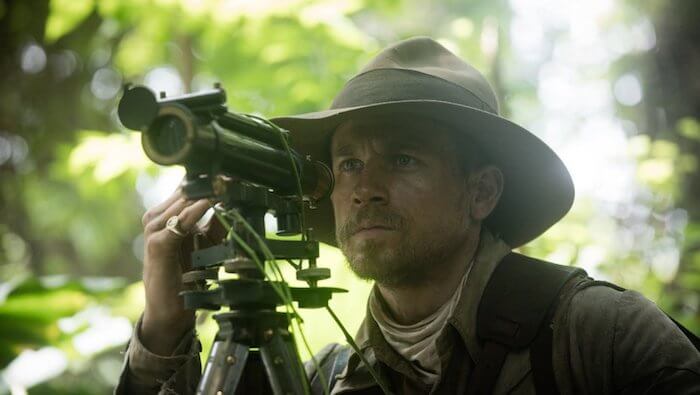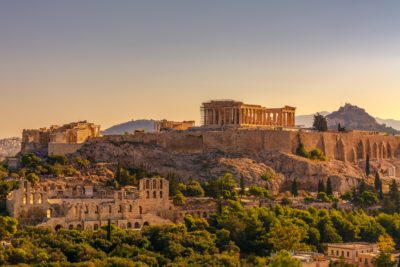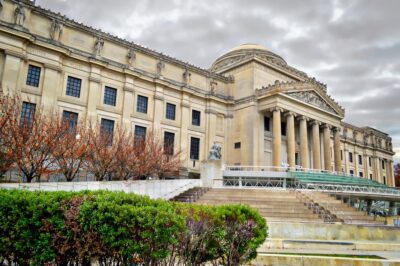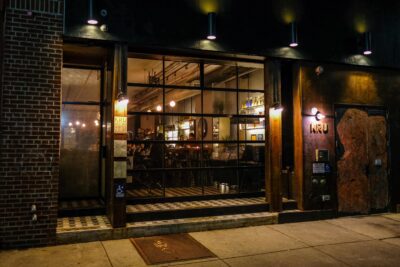Lost Cities: The Films of James Gray


Opens April 14
James Gray
April 12-15 at the Metrograph
First it’s voices, the howling wind, the soft whispering choir, the mournful moan of an orchestra, the unforgiving void of silence temporarily covered by the contemplative sounds of history and its cast-off sons and daughters. A train pulls out of a dark tunnel into the Queens sun, revealing as if for the first time the faded light on ancient tracks and the jaundiced tenements above. A man drops into the calm silent blue of Sheepshead Bay at dawn. From Ellis Island, a boat drifts out to sea, carrying two passengers to possible freedom, while a fallen angel walks alone away from them, beaten, bloodied, and towards an uncertain end. A funeral procession pauses before a flaming pyre, taking two drifting souls to their home, knowing well that only caught in the midst of their pursuit will they be at rest. The James Gray hero knows no rest and no happiness while we’re with them. We see the rush to fleeting moments of certainty, the Pavlovian jog towards happiness when its familiar song is heard, no matter how distantly. His world is beautifully ragged and rapturous, but all Gray’s characters see is what lies beyond its boundaries.
James Gray has become a very odd figure in American cinema: beloved by the French, quietly respected by a handful of US critics, virtually unknown as an entity to mainstream audiences thanks to troubles with distribution and bad timing. He’s a cult director, but his cult is largely comprised of critics who chase a modernist, romantic image and a sound design that’s never at rest. It’s anyone’s guess how his latest, the almost impossibly wonderful The Lost City of Z, will perform. It is and isn’t typically Gray in its fascinations and deviations. Gray’s previous films—Little Odessa, The Yards, We Own The Night, Two Lovers and The Immigrant—are all set in New York, concern immigrant conclaves built into the outer boroughs, turn on family love and/as betrayal, and are rich in cinematic history. Little Odessa begins with gangster antihero Tim Roth murdering a man in cold blood, before cutting to Roth’s little brother (Edward Furlong) watching Burt Lancaster shoot his brother in the western Vengeance Valley. The film print breaks and melts, signifying that the story of family violence will be spilling into Gray’s reality. Sure enough, we learn that abusive father Maximilian Schell is cheating on dying mother Vanessa Redgrave, and that Schell wants to keep Furlong away from Roth, fearing his violence will altar the younger boy’s life. It’s impossible to keep allegiances, morality, family bonds, and gut feelings separate in Gray’s world. Which is perhaps why he’s so transfixed by transportation from one environment to another. With the idea of going “home.”
In Little Odessa, Roth dreads going back to Brooklyn, knowing his family are waiting for him there to conclude the oedipal saga he began long before the film started. In The Yards, Mark Walhberg’s mush-mouthed ex-con returns home to find work and go straight, but discovers a plot that seems to have been waiting for him in order to start turning. In the early scenes of We Own The Night, drugged-up black sheep Joaquin Phoenix leaves his home, a club that he manages for a family of Russian drug traffickers, in order to see his brother and father, police officers, honored in a church basement. The club, an auburn site of decadence where the sounds of David Bowie and The Clash bounce off coked-up swingers, is an enticement away from the church, with its tins of macaroni, old-time jazz music, and happily married policemen. Throughout the film, Phoenix will slowly become his father, going so far as to take the police exam, ending the film on the same stage where his father is honored by the police in the early going. In Two Lovers, Phoenix plays a suicidal man trapped in the apartment he shares with his parents, transfixed by the woman across the alley (Gwenyth Paltrow, in one of her best performances) and the promise of freedom from his orderly existence. His fixation on Paltrow, and his plans to escape with her, blinds him to the charms of the nice woman (Vinessa Shaw) his parents want to fix him up with, who comes to represent the same stifling normality his parents represent. In The Immigrant, two sisters are separated at Ellis Island and must bear the whips and scorns of the burgeoning, violent American identity, already hostile to Polish women of perceived low character. Even their own uncle turns on them when they threaten his new American life. The sisters want only to have a chance at living freely after they witness the murder of their parents in their homeland. Now they have no home. In The Lost City of Z, soldier-turned-explorer Percy Fawcett is sent to Bolivia on a mapmaking expedition and discovers remnants of a civilization he believes to be more ancient than his own. He becomes obsessed by the prospect of returning, his civilian life lived in the moments between trips back to the jungle, his other achievements neutralized by this great pursuit. Fawcett’s yearning to be once again beneath the canopies of the Amazon becomes a fever he cannot cure. The desire comes to define his dreams as well as his waking life. It is his religion, it’s what puts him at peace with the world that is otherwise too violent and cruel.
Gray’s films are religious in a very old-fashioned way. His characters pray, in one way or another, to forces beyond their control for help ordering their lives. Thanks to his excellent cinematographers (he’s worked with the great Harris Savides, Tom Richmond, Joaquin Baca-Asay and lately Darius Khondji, who shot both The Immigrant and The Lost City of Z), he transforms most interiors into reverent womb spaces, sites of religious transformation and worship. In Little Odessa‘s most powerful scene, Roth and Schell form a truce so that Roth can visit his dying mother one final time. With Schell and Furlong looking at Roth with a mix of awe and terror, the scene has something of The Exorcist about it, as if they’re watching Max Von Sydow arriving to rid their home of the devil. But every Gray hero is half-angel, half-devil. They all want to believe that there could be a magic solution, an act of god, that will solve all their problems. When Marion Cotillard sees Jeremy Renner floating in his magic act in The Immigrant, her faith is temporarily restored, enough that she agrees to fight for her life with renewed purpose. When fate comes calling for Fawcett, he drifts with its current, believing life will fill the hole in his soul. When he travels, in the film’s final act, back to the jungle that so possesses him, he sees his wife and children’s bedrooms travel by as if they were out the window of the train he rides towards the unknown. If he is meant to drift, even if it means leaving behind the earthly trappings that have so far defined him, then drift he must.
There’s a strong case to be made for Gray being the filmmaker that most epitomizes New York, in all its wretched glory. He films it with more love and honesty than nearly anyone else alive, showcasing both lavish and hideous architecture carved into smoggy streets like ancient altars. His cinephilia mirrors the myriad repertory theatres scattered throughout the city. One can see in his films the entrenched immigrant souls of John Ford and Michael Cimino, from whom he borrows molasses-thick tableaux of ritual, an important way to maintain one’s identity in a strange land. It’s easy to see the stormy, passionate cool of Jean-Pierre Melville, himself an ardent cineaste who borrowed American gangster narratives just like Gray did with his first three features. From Sidney Lumet and William Friedkin, the depressive, neurotic turmoil of inner city life is most plainly borrowed. And from Luchino Visconti, a luxurious rendering of pain and suffering, especially internal. While the gorgeous sound of violins on the soundtrack snap taut like leather straps, cities explode with rich life, the streets bursting with mean dreamers who never found the transcendence Gray’s characters pray for.
So with such a particularly New York sensibility, it shocked at least this member of Gray’s cult when he left for the jungle to make The Lost City of Z. On the one hand it offered him an opportunity to mix the John Ford of The Quiet Man, glimpsed in Fawcett’s life back in the UK, and the John Ford of Arrowsmith and The Hurricane, beset by tropical fevers and storms, in thrall to nature’s vicious whims. Whatever brought him there, Gray takes it to the jungle just as expertly as he does Brighton Beach or the Q train. Like Fawcett he finds new meaning, new languages, new sounds and spirits. Composer Christopher Spelman’s strings mingle with the chirping of birds and bugs and the rustling of leaves to create a bed for Fawcett to conjure his dreamed life, the lost city he chases so doggedly. The sounds and images of the jungle are never far from his mind. Fawcett is the first of Gray’s immigrant heroes to truly find their place outside their first home. The magic Fawcett discovers is simply to be found in the air around the Amazon, and locating the belief that a truer understanding of the world could be found is his miracle. His final act is to preserve forever the act of moving towards bliss. That is the act that most transfixes Gray. Whether by train, boat, or by simply drifting, past the chorus of the world, the angry song of the wind, we might find our purpose, the lost city of our imagining.
You might also like 


























